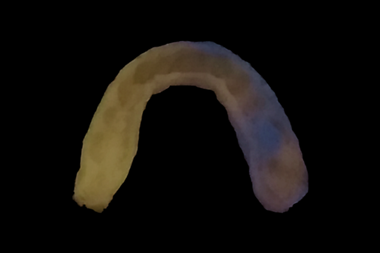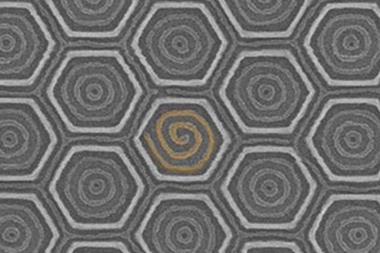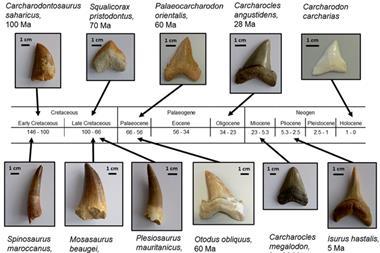Scientists overcome obstacles to produce first copy of one of nature’s strongest and toughest materials

Tooth enamel is one of the most remarkable composite materials nature produces – strong enough to grind through all sorts of food and yet tough enough to last a lifetime. If a synthetic mimic could be made it would find many uses, but the nanostructure of tooth enamel is extremely difficult to imitate. Now, however, Nicholas Kotov of the University of Michigan, US, and colleagues have developed a process to make a material with properties comparable to natural tooth enamel.
Biology is adept at producing materials with hard to combine properties. So, strong materials that are resistant to deformation often lack toughness – the ability to absorb energy without breaking. By combining strong inorganic and energy-absorbent organic materials, however, biomaterials can be both strong and tough. Although their physical properties are similar, the nanostructures of bones, exoskeletons and other hard biomaterials vary enormously between creatures. However, the nanostructure of the enamel on human, sea urchin, dinosaur and all other known teeth is strikingly similar: vertical columns of stiff, inorganic material stand embedded in a polymer matrix. Its evolutionary conservation in such different creatures suggests that this nanostructure offers functional benefits. Kotov’s hypothesis is that the energy from the vibrations the tooth is subjected to during chewing is dissipated thanks to friction, as the flexible polymer pillars of the tooth oscillate more than the stiffer ones. This, he believes, prevents the accumulation of defects in the enamel that would otherwise lead to failure.
The potential to produce a material as hard wearing as tooth enamel is tantalising for applications from biomedical implants to aircraft. Unfortunately, this has previously proved impossible because of the column structure of tooth enamel. In the new work, the researchers deposited zinc oxide nanocrystals on a wafer and grew them in solution into a stalagmite-like forest of nanowires. They then filled in the gaps by coating the nanowires with layers of the polymers polyallylamine and polyacrylic acid. After baking the finished composite, they grew another forest of nanowires on the top surface and repeated the process. Both processes have been demonstrated previously, but their use together is novel: ‘It’s that combination which gives the magic,’ says Kotov.

The researchers tested their material under both static indentation and dynamic indentation at a wide range of frequencies, finding it tolerated the stress well in all cases. Kotov says the most important determinant of a material’s vibration tolerance is the product of its stiffness and its ability to damp vibrations. ‘Comparing that figure for enamel and for our material, we have a match, or actually we’re slightly better,’ says Kotov. It should also be possible to tailor the material for specific purposes by changing the ratio of organic material to inorganic.
‘I really like it!’ says materials scientist Vladimir Tsukruk of Georgia Institute of Technology in Atlanta. ‘One of the problems [in mechanics] is that, when you go to very high frequencies, all your soft materials will become stiff.’ This can make composites that are tough in response to static stress become brittle. He says the ‘standing, vertically-oriented structure’ that Kotov’s group has produced here allows ‘very different methods for breaking crack propagation’ to come into play, resulting in materials that retain their toughness in response to high-frequency vibrations.
References
B Yeom et al, Nature, 2017, 543, 95 (DOI: 10.1038/nature21410)

















No comments yet